Understanding the meta for LoL's 2015 World Championship
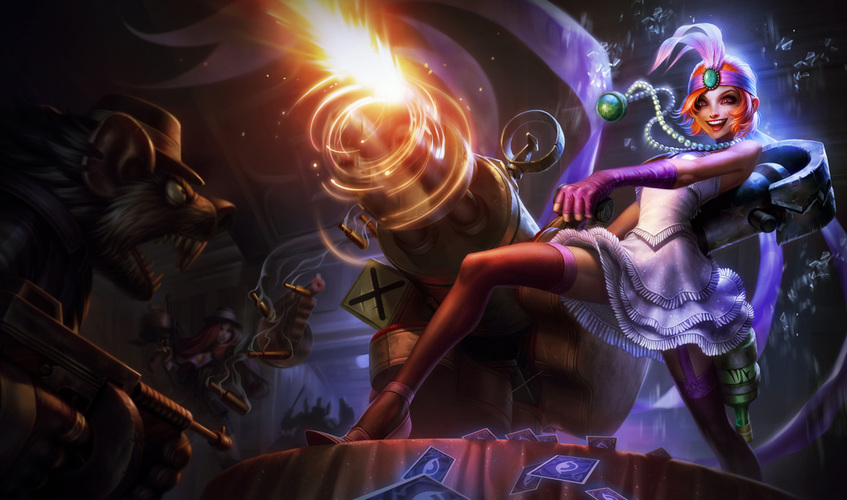
Games like League of Legends tend to have a daunting burden of knowledge requirement to really understand them well, much less play at the pro level. An absolutely gargantuan character roster, a complex system of item and spell interactions, and years of developed strategic nuances makes for a bewildering spectacle for the average viewer. Laneswap? Rotation? Waveclear? The heck does any of that even mean? Is this the English broadcast you're watching, or Greek?
Well, yes, it's the English broadcast. And though the jargon will come flying thick and fast, a few simple explanations can unravel what seems to be the most esoteric of the explanations given by the casters. At least, relatively simple. To be fair, Patch 5.18 has been full of unexpected surprises: champions that haven't been seen in years are suddenly sprouting out of the woodworks to catch whole regions by surprise, while others have been performing less well than expected. Nonetheless, clear patterns have emerged after a couple weeks of play.
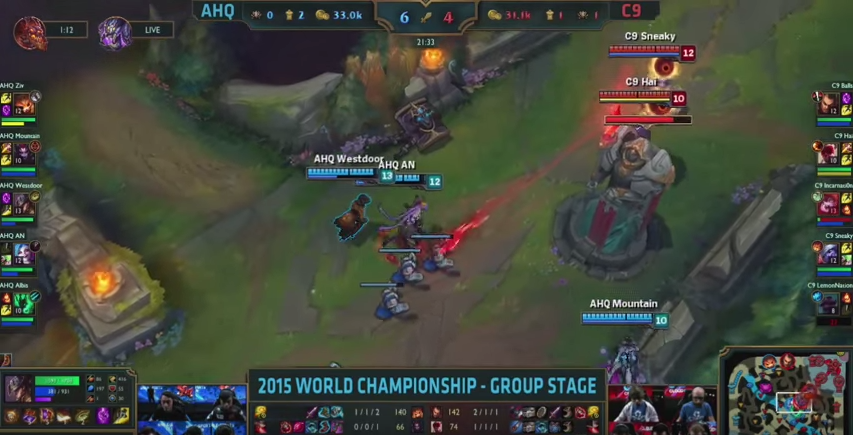
Basic strategies
Since 2011, the metagame for League of Legends has settled into a familiar paradigm: you have a solo laner, a jungler, a mid lane "carry" (basically somebody that does most of the damage), a bot lane carry, and a support player that makes sure the bot laner gets as much gold as possible without coming to harm. The 1-1-1-2 structure has persisted through numerous patch changes—but within that framework's erupted whole volumes of strategic interpretations, emphasizing or mitigating specific roles and functions based on champion ability. In general, however, it breaks down into two primary schools of team compositions:
Siege
Siege teams are designed to mow down turrets as efficiently as possible. They'll comprise significantly of champions with long-range abilities and attacks, and focus especially on those with "waveclear," or the ability to destroy whole squadrons of minions near-instantly. It'll be difficult for the enemy team to pick fights into them, as they'll either have a ridiculous amount of area of effect damage over a massive radius, punishing teams that try to approach, or can easily escape pursuit by jumping away or walling off attackers.
When at all possible, the siege composition will try to avoid straight-up fights. They lack the sheer damage of more combat-oriented strategies, or the crowd control effects to dictate the pace of a skirmish. Instead they'll "rotate" lane to lane, and often have one player off to a farther lane to split the enemy team's attention.
Pick
The biggest gaming news, reviews and hardware deals
Keep up to date with the most important stories and the best deals, as picked by the PC Gamer team.
All League of Legends strategies revolve around finding ways to take down turrets and inhibitors, but the pick composition does it less directly than a siege team. Instead, they look to "pick off" targets of opportunity, forcing engagements to send the enemy team packing back to respawn. After all, a dead enemy is one that can't defend their turrets.
For that goal, they pick champions that can successfully ensnare and take down opposing players. A significant quantity of crowd control spells are expected, as are bursty assassins that can take outtargets of opportunity faster than their teammates can bail them out. Their game plan revolves around using sight and vision wards to find opportunistic ambushes—a successful pick team will snowball rapidly, gaining both kill bounty and turret demolition gold to always have an edge in fights. But as a pick composition is top-heavy in champions that are better at single-target damage than waveclear, falling behind means getting shoved under the turret where they're mostly useless.
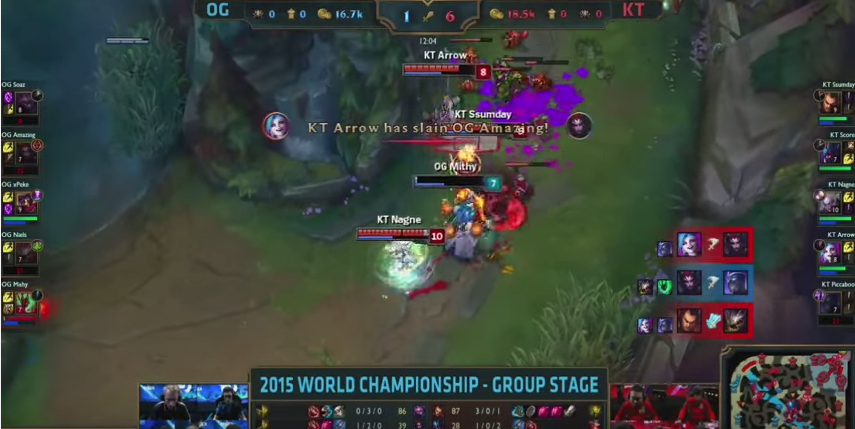
Common champions
There are, of course, as many variations of the two themes as there are teams in contention. It depends on what champions are chosen, what their range of options are, and how they interact with others on their team. Understanding the actions and decisions of a team necessitates understanding the strengths and limitations of the champions they've chosen to field. It also makes the drafting phase before the start of the game a lot less confusing—when commentators and internet armchair coaches claim that a team's lost or won in the draft, it refers to whether or not a team's managed to counter specific champions, or has an overall more coherent and powerful strategy at play.
To make this easier, most champions are role-specific. ADCs tend to stay stuck with their supports, supports are rarely used as mid laners, and junglers tend to stay in the shadows until otherwise killing people. While there are such thing as flex picks in League of Legends (especially on 5.18), where a champion chosen doesn't necessarily determine what role they're being played in, the majority of champions are nonetheless role-players.
Top Lane
Currently, top lane focuses on two champions. Darius, the beefy juggernaut with pauldrons twice the size of his head, is a short-ranged high-powered tank that shreds health bars (while healing his own) with a wild swing of his axe. He's meant to wade into fights and punish people for trying to approach his teammates, making him popular as a deterring threat in the front lines of a siege composition. His ultimate ability, Noxian Guillotine, is a giant spike of single-target damage that bypasses his target's armor, making it extremely unsafe to be anywhere near him when you're a low health.
Darius tends to build Black Cleaver, an item that grants him advantages on two fronts. First, the Cleave effect reduces the armor of targets he's managed to hit, making it even easier to take them down. Second, it makes him move faster when he's struck a target, letting him keep up with them as they try to run away.
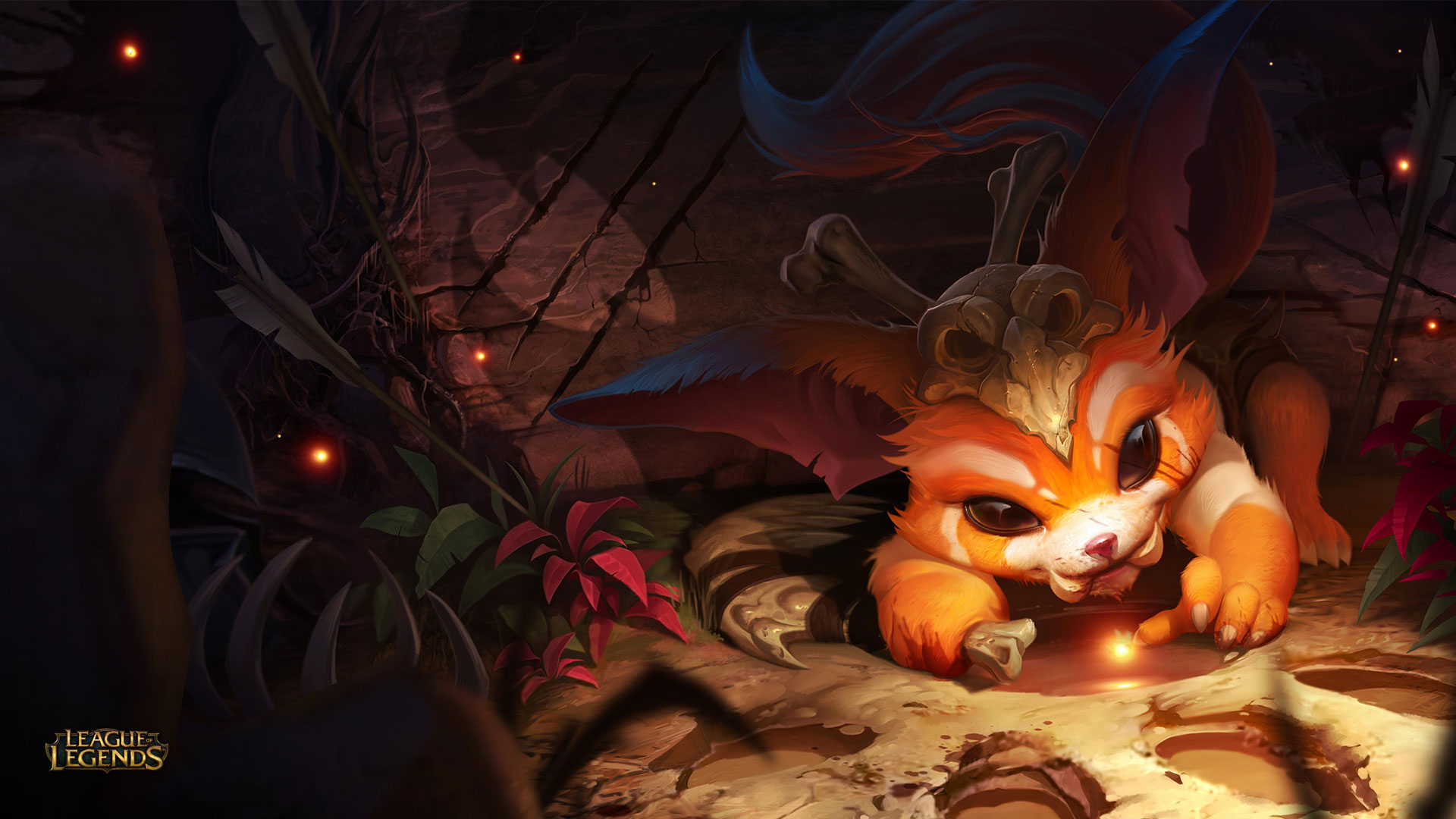
Gnar, the cute and furry boomerang-throwing brat, doesn't look like he'd be a counter to Darius. But the long range of his attacks and abilities, along with the slowing effects from getting hit with the boomerang, plays nicely against Darius's short range and comparative lack of mobility. And that's just when Gnar's still cute, cuddly and squishy—once he's maxed out his rage meter, Gnar transforms into a monster right out of a Japanese kaiju film, rampaging across the stage and flinging people into walls.
He's tougher, beefier, hits like Godzilla, and that's before he buys any items. Gnar players are increasingly favoring Frozen Mallet, which slows targets he attacks. When stacked with the slow provided by his boomerang, champions like Darius have a hard time entering fights.
Jungle
Junglers on this current patch tend to play two roles. Naturally, given that they spend most of the game hidden in the fog of war, they make great assassins, picking off players and punishing them for being too close to enemy territory. They're also crucial to establishing map control: since they're not restrained to a lane, they are free to sneak into the enemy's side of the map and plant wards, hopefully catching hints of the enemy jungler's plans in the process.
Elise, the sinister spider champion, is particularly good at the assassinating bit. Her Cocoon snares enemies from a distance, and her attacks tend to deal large chunks of damage even to the beefiest tanks—further enabled by the Runeglaive jungling item, which makes her basic attacks deal bonus damage after she's cast a spell. She's even particularly good at killing people just when they think they've made it to safety: normally, attacking a champion under their own turret makes the turret blow you up, but Rappel makes her disappear off the map entirely, giving them nothing to shoot at.
Rek'sai, on the other hand, can't dive champions quite as handily. But the tanky plated landshark is really good at being literally anywhere else. The tunnels she digs persist for a long time, and can be used as landmarks for her ultimate ability, teleporting Rek'sai to where-ever she's been before. Rek'sai players will commonly build Sightstone to take further advantage of that mapwide coverage. The tunnels alone don't provide any vision, but if you can drop free wards all over the enemy's side of the map near the tunnels, it makes it trivial to ambush prey and snag that 300 gold bounty for a kill.
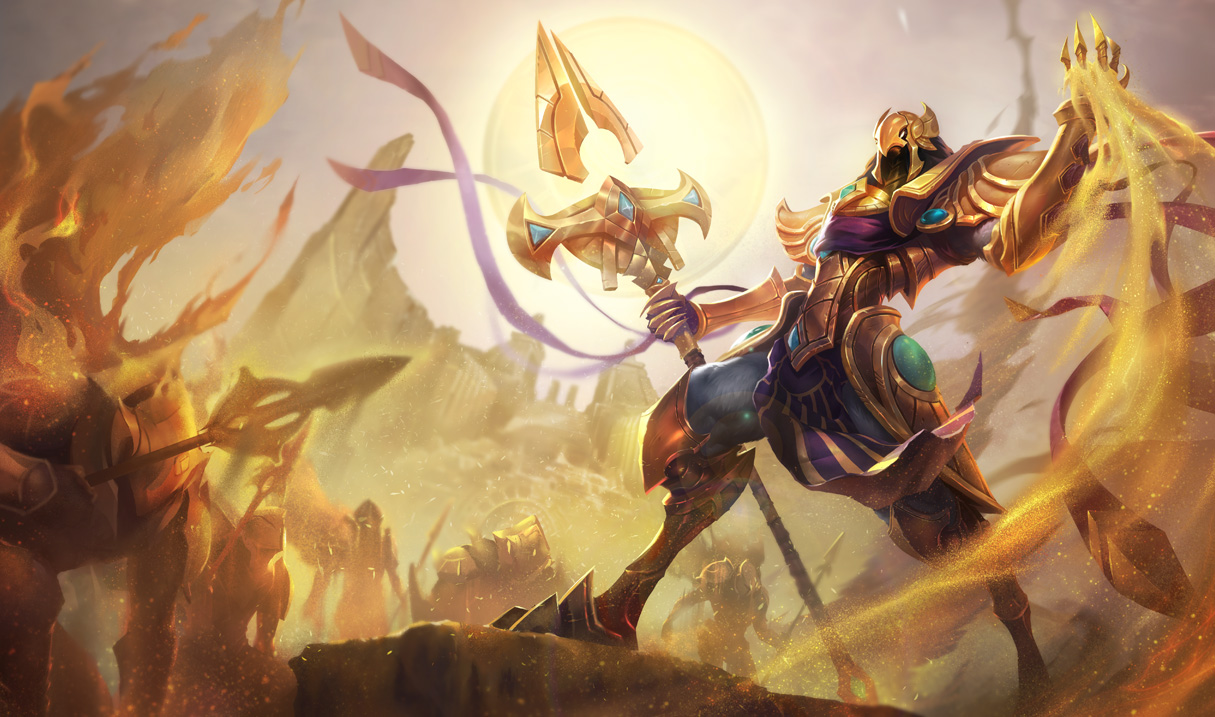
Mid lane
The mid lane role's unusually diverse this year. Players have demonstrated dozens of potential picks—though they do come in two distinct styles. Azir, for example, is archetypical of the "control" style mage: he's immobile and susceptible to getting blown up by assassins, but his area of effect spells dominate half the battlefield, making it hard to approach him in the first place (especially not after he tosses up an impassable wall in your way).
Control mages often end up forced to build Zhonya's Hourglass, thanks to their immobility—it turns them into an invincible gold statue for a short period of time, in return for not being able to attack or move. That might seem like a bad idea when you've got an enemy team going for your throat, but it's a good way to cancel out the spells they've spent on you, leaving your enemies in turn vulnerable to your team.
In contrast, assassins like LeBlanc have to get up close and personal to deal the majority of their damage—but are mobile enough to do the trick. Her blinks and dashes makes it difficult to land skill-shots on her, or even put obstacles in her way. She can easily blink over Azir's Emperor's Divide to blow him up, often forcing her opponents to build Athene's Unholy Grail early into the game, which offers less damage than comparable options, but provides a measure of Magic Resistance to mitigate the huge burst of damage coming out of her. LeBlanc herself prefers building items like Morellonomicon and Rabadon's Deathcap: items that offer a lot of raw up-front power.
ADC
Mages in general tend to have a hard time taking down top laners and junglers, who tend to build enough resistance items to shrug off their spell rotations. They also tend not to take turrets particularly well, as their auto-attacks tend to be slow and limp. That's where AD carries step in, firing a steady and relentless sand blaster of autoattacks to melt even the beefiest tanks and most obstinate turrets. Jinx, in particular, is really good at both: she can toggle between a fast-attacking minigun that melts turrets inseconds, or a long-range rocket barrage that deals explosive splash damage from a safe distance.
Jinx players build Infinity Edge almost immediately. Why would a gunner build a sword? Because this sword adds a bonus to Jinx's critical strikes, and her Fishbone rockets apply critical strike damage to its area of effect, blowing up entire teams that are clumped too closely together.
In contrast, Kalista's a shorter-ranged AD carry, but one that's very good at destroying single targets. She sticks ghostly spears into her targets, and can yank them all out at once with Rend to finish them off in a quick burst, making her exceedingly dangerous to go toe-to-toe against. Worse, if her support's nearby, she can literally fling them in your face with Fate's Call, knocking people up into the air and helpless against her assault. To complement that, she rushes Blade of the Ruined King instead of Infinity Edge—Blade offers "lifesteal," or the ability to vampirically drain her victims of health with her attacks, keeping her healthy at their expense. It can also be activated to slow targets down, and does more damage the more health they have on them, making her a threat to even the beefiest tanks.
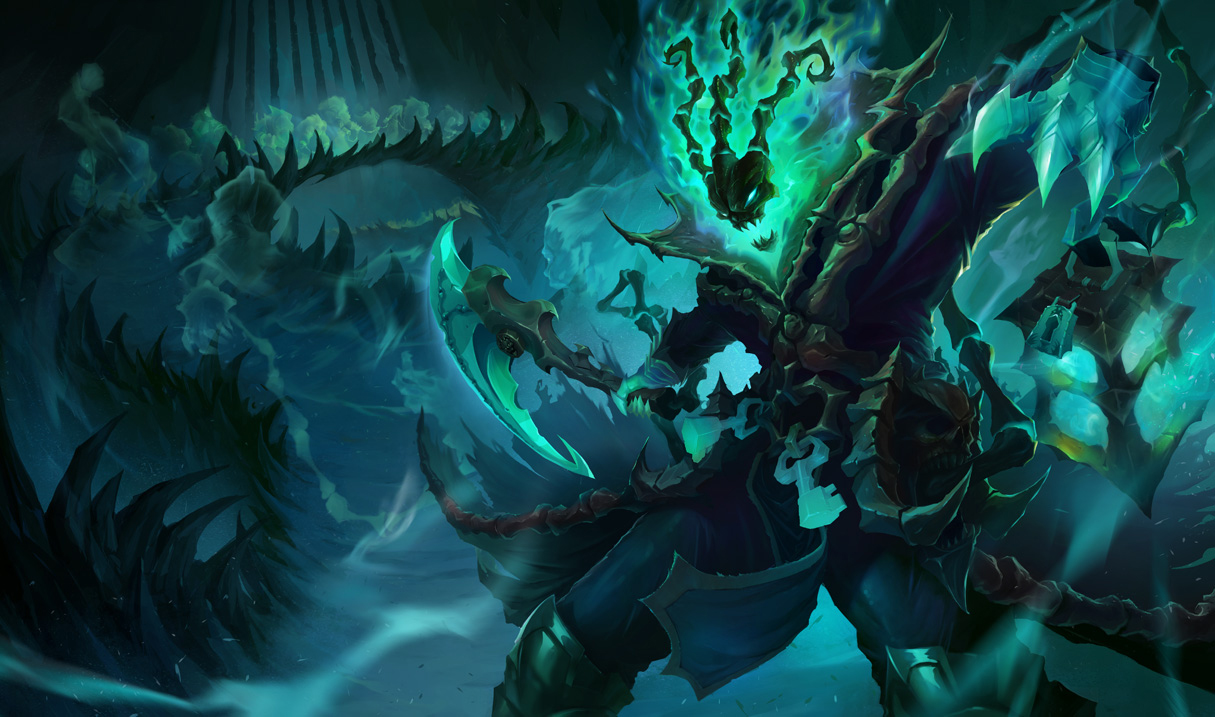
Support
Support players tend to get by without a whole lot of gold—but their contributions to the team can sometimes eclipse that of the carries they protect. They are the main source of vision and zone control in the game, dropping wards all over the map, knocking threats off their allies, and fishing for targets of opportunity for their team to jump on. All of them build Sightstone—free wards complements their lack of income, after all. Most also build Boots of Mobility, as the extra out-of-combat movement bonus makes it easier to drop wards all over the map.
In Thresh's case, it also makes it easier to rescue mid laners and junglers that chose to pick fights in bad places. Dark Passage lets Thresh drop a lantern at the feet of their allies—just one click, and they'll be immediately transported next to Thresh, and hopefully out of the way of harm. In reverse, Death Sentence sinks a chained meathook into the body of a hapless enemy, dragging them into a fight or imprisoning them in The Box—a ghostly five-sided prison that slows and damages anybody that runs into and breaks its walls.
Tahm Kench, the giant monstrous catfish, imprisons people too—in his belly. The game's newest support's made a splash as large as his mouth on the World stage, thanks to both the offensive and defensive options from his Devour spell. He eats his own allies, picking them up just before a lethal spell hits them and spitting them out to safety. Most dramatically, however, is his ability to eat enemies—once he's softened them enough with his attacks, he can swallow an enemy champion whole, waddle closer to an allied player, and deposit them at their feet. When used with Jinx, he can regurgitate them right on top of her Flame Chompers grenades, keeping them rooted down and helpless for an even longer duration while she riddles them with bullets.
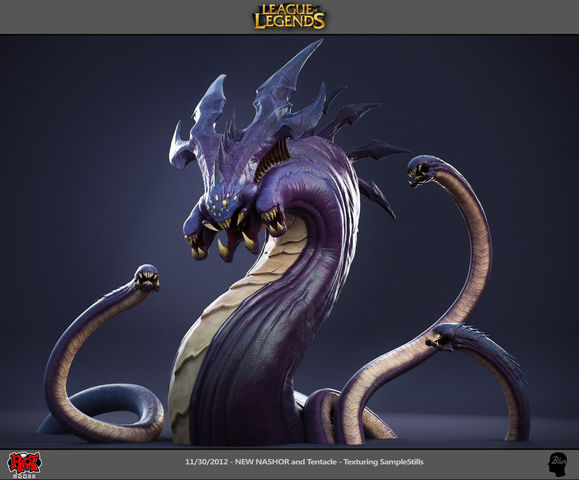
Focus points
Teams would quite happily ignore the opposing team and just mow down turrets in a straight path to victory—if they could. But games tend to rapidly devolve into all-out brawls thanks to two non-playable characters on the map.
Dragon, found in the lower river, provides Dragon Slayer buffs to teams that get the last hit on him. Each stack provides a different bonus—starting from extra attack damage and ability power, to damage to turrets, to movement speed, to better waveclear. The bonuses tend to be relatively minimal—until a team gets their fifth stack. Aspect of the Dragon doubles all previous bonuses and adds extra burning damage to every team member's attacks, giving the controlling team a serious advantage in fights.
Baron Nashor, in the upper river, provides only one stack of buffs, but it's a big one. The Hand of Nashor amplifies spells and attacks as well, but not just for champions. The aura provided will also beef up allied minions—cannon minions shoot from outside turret range, melee minions are harder to take down, and caster minions shoot faster, all buffs represented by an increase in minion size and a sparkly purple aura around them. A team with Nashor's buff will be surrounded by a relentless army of robots to do their bidding, often (though not always) winning the game outright. The sheer threat of it can make a team incautious, running into what they know to be an ambush just to keep Nashor out of the other sides' hands.
Sometimes they succeed. Sometimes a sneaky jungler steals it right out of the enemy's hands. And a just-about-won game dramatically turns around. Tune in for the quarterfinals to catch the excitement.

PC Gamer Pro is a new channel dedicated to esports and competitive gaming. Check back every day for exciting, fun and informative articles about League of Legends, Dota 2, Hearthstone, CS:GO and more. GL HF!

